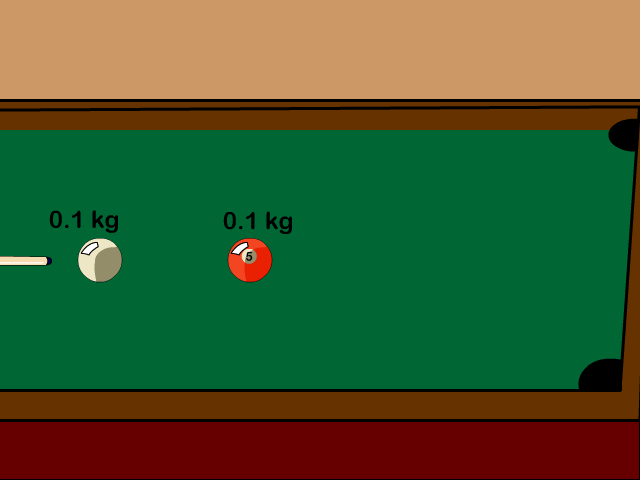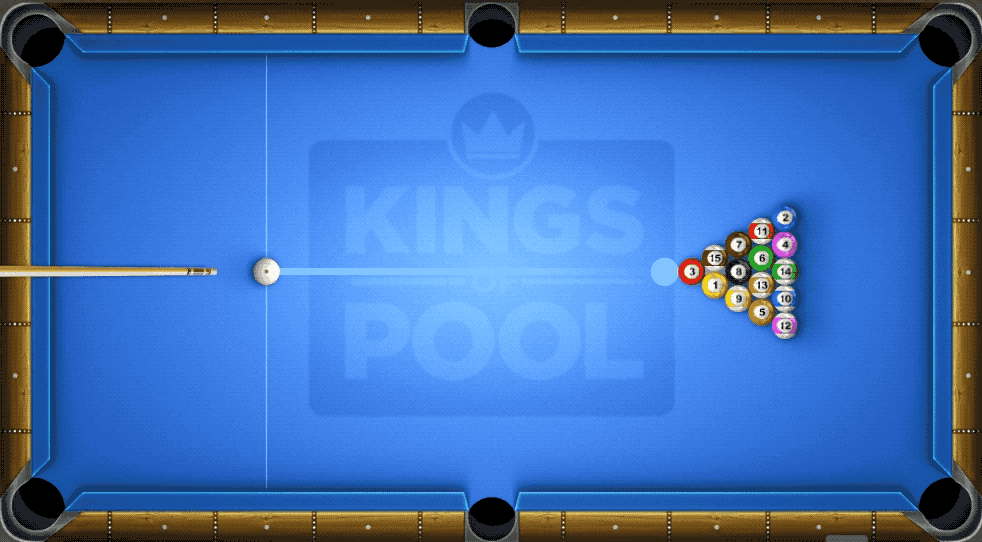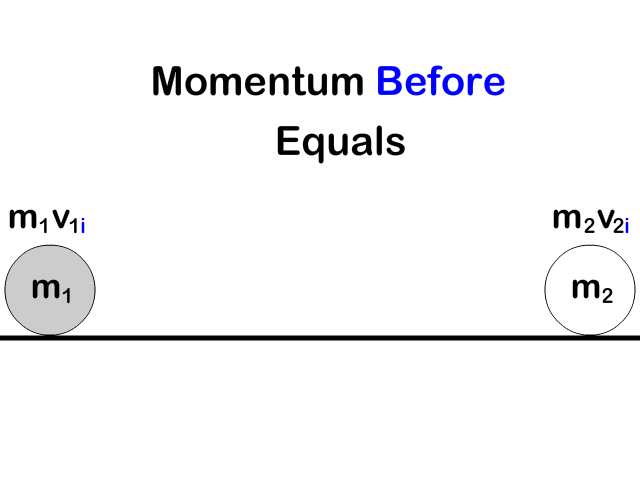Akoranga 32 Mahi Tuatahi 🔗
Ethan and Kelley are playing on a merry-go-round spinning clockwise. Ethan is sitting $3m$ from the center and has a speed of $1.5ms^{1}$.
- Draw a diagram with labelled arrows showing the velocity and acceleration of Ethan. (A)
- What is the name of this acceleration? (A)
- Calculate the size of his acceleration (A)
- State the direction of the horizontal force acting on Ethan, and explain clearly why there must be a horizontal force acting on him. (E)
- Kelley pushes the merry-go-round so that its period is halved. Explain what this does to the size of the horizontal force acting on Ethan. (E)
Ngā Whāinga Ako 🔗
- Be able to use the momentum equation ($p=mv$)
- Be able to calculate basic change in momentum situations ($\Delta p = p_{f} - p_{i}$)
Write the date and ngā whāinga ako in your book
Momentum 🔗
Momentum is a quantity of an object which involves its mass and velocity. It can be thought of as the oomph of an object, or how hard it is to change its direction.
$$ \begin{aligned} & p = mv \cr & momentum = mass \times velocity \cr \end{aligned} $$
Pātai Tahi (Q1) 🔗
Using the equation
$$ \begin{aligned} & p = mv \cr & momentum = mass \times velocity \cr \end{aligned} $$
what are the units for momentum?
Whakatika Tahi 🔗
$$ \begin{aligned} & p = mv \cr & momentum = mass \times velocity \cr & momentum = kgms^{-1} \end{aligned} $$
Pātai Rua: Scalar or Vector? 🔗
- Momentum is a vector quantity because it depends upon a vector (velocity).
- Momentum is always in the direction of the objects velocity.
Where is it Used? 🔗
Momentum is very useful when considering collisions and explosions. Most questions you will see will involve collisions. It helps us describe and understand why objects move how they do after collisions.
Pātai Toru (Q3) 🔗
- Calculate the momentum for a 30g golf ball travelling at $10ms^{-1}$
- Calculate the momentum for a shopping trolley of mass $24kg$ travelling at $0.75ms^{-1}$
- Calculate the momentum for a ship of mass 30,000 tonnes moving at $0.2ms^{-1}$
$$ \begin{aligned} & && \text{(K)} \cr & && \text{(U)} \cr & && \text{(F)} \cr & && \text{(S + S)} \end{aligned} $$
Whakatika Toru 🔗
$$ \begin{aligned} & m = 0.03kg, v=10ms^{-1} && \text{(K)} \cr & p = ? && \text{(U)} \cr & p = mv && \text{(F)} \cr & p = 0.03 \times 10 = 0.3kgms^{-1} && \text{(S + S)} \end{aligned} $$
Whakatika Whā 🔗
$$ \begin{aligned} & m = 24kg, v=0.75ms^{-1} && \text{(K)} \cr & p = ? && \text{(U)} \cr & p = mv && \text{(F)} \cr & p = 24 \times 0.75 = 18kgms^{-1} && \text{(S + S)} \end{aligned} $$
Whakatika Rimu 🔗
$$ \begin{aligned} & m = 30,000,000kg, v=0.2ms^{-1} && \text{(K)} \cr & p = ? && \text{(U)} \cr & p = mv && \text{(F)} \cr & p = 30,000,000 \times 0.2 = 6,000,000kgms^{-1} && \text{(S + S)} \end{aligned} $$
Change in Momentum (1D) 🔗
When a force acts upon an object and its motion changes, its momentum will also change. We call change in momentum $\Delta p$.
$$ \begin{aligned} & \Delta p = p_{f} - p_{i} \cr & \Delta p = \text{final momentum} - \text{initial momentum} \end{aligned} $$
- In 1D we can use this equation directly
Pātai Ono (Q6) 🔗
Angus bowls a cricket ball of mass $160g$ at a speed of $25ms^{-1}$. Lucy hits the ball back towards him at $35ms^{-1}$. Calculate the change in momentum.
Hint: Recall that velocity in one direction is positive and the other direction, negative.
$$ \begin{aligned} & && \text{(K)} \cr & && \text{(U)} \cr & && \text{(F)} \cr & && \text{(S + S)} \end{aligned} $$
Whakatika Ono 🔗
$$ \begin{aligned} & m=0.16kg, v_{i} = 25ms^{-1}, v_{f} = -35ms^{-1} && \text{(K)} \cr & \Delta p = ? && \text{(U)} \cr & \Delta p = p_{f} - p_{i} = m_{f}v_{f} - m_{i}v_{i} && \text{(F)} \cr & \Delta p = (0.16 \times -35) - (0.16 \times 25) = -9.6kgms^{-1} && \text{(S + S)} \end{aligned} $$
Whakawai/Practise 🔗
Textbook Momentum & Impulse Q1, Q2 pg. 130
Check the answers in the back of the book once done!
Te Whāinga Ako 🔗
- Be able to use the impulse formula: $F \Delta t = \Delta p$
Write the date and ngā whāinga ako in your book
Impulse 🔗
In order for momentum to change, a force must act upon an object for some amount of time. This is called impulse.
$$ \begin{aligned} & F = ma \cr & F = m \frac{\Delta v}{\Delta t} \cr & F = m \frac{(v_{f} - v_{i})}{\Delta t} \cr & F \Delta t = m (v_{f} - v_{i}) \cr & F \Delta t = mv_{f} - mv_{i} \cr & F \Delta t = p_{f} - p_{i} \cr & F \Delta t = \Delta p \end{aligned} $$
Pātai Whitu (Q7): Satellite in Orbit 🔗
A satellite is in orbit. It weighs $300kg$ and it has a thruster which exerts a force of $1500N$. How long must the satellite fire its thruster for if it wants to increase its speed from $5000ms^{-1}$ to $6000ms^{-1}$?
Hint: Calculate $\Delta p$ first, then use the impulse equation $F\Delta t = \Delta p$.
Whakatika 🔗
$$ \begin{aligned} \Delta p &= mv_{f} - mv_{i} \cr &= m(v_{f} - v_{i}) \cr &= 300(6000 - 5000) \cr &= 300000kgms^{-1} \end{aligned} $$
$$ \begin{aligned} F \Delta t &= \Delta p \cr 1500 \Delta t &= 300000 \cr \Delta t &= \frac{300000}{1500} \cr \Delta t &= 200s \end{aligned} $$
Whakawai/Practise 🔗
- Textbook Momentum and Impulse pg. 130 Q5
Ngā Whāinga Ako 🔗
- Understand the assumptions behind momentum conservation
- Be able to use conservation of momentum to understand collisions/explosions
Write the date and ngā whāinga ako in your book
Conservation of Momentum 🔗
- Momentum is conserved during collisions between objects and in explosions.
- $p_{i} = p_{f}$
- Conservation of momentum only occurs when no external forces are present because an external force would change the momentum ($F \Delta t = \Delta p$)!
- For example, gravity or friction either do not apply or have been cancelled by reaction forces.
- Conservation of momentum is the only way to solve collision problems
- Energy is not usually conserved and therefore cannot be used.




Conservation of Momentum in 1D 🔗
- Use $1$ and $2$ to indicate object one and two.
- We will use $i$ and $f$ to indicate initial and final.
- Sometimes you may see $u$ and $v$ used to differentiate between initial and final velocities.
$$ \begin{aligned} \text{Assuming no external forces (momentum is conserved):}\cr p_{i} &= p_{f} \cr p_{1i} + p_{2i} &= p_{1f} + p_{2f} \cr m_{1}v_{1i} + m_{2}v_{2i} &= m_{1}v_{1f} + m_{2}v_{2f} \cr \end{aligned} $$
Collisions: Elastic vs. Inelastic 🔗
Elastic:
- Energy is conserved.
- $\sum E_{ki} = \sum E_{kf}$
Inelastic:
- Energy is not conserved.
- Some energy is lost to heat/friction/etc.
- $\sum E_{ki} \ne \sum E_{kf}$
To tell which one a collision is, calculate the total energy before and after and see if they are equal! You will not be asked to perform calculations, but may be asked what you should do to differentiate between them.
Pātai Iwa (Q9): The Rifle 🔗
Jordan is out clay pigeon shooting over the weekend and notices that the gun recoils when he fires. His rifle has mass $4kg$ and fires a bullet of mass $20g$ at $400ms^{-1}$. What is the recoil speed of the rifle into his shoulder?
Hint: Think carefully about the initial speed of both the rifle and bullet before firing.
$$ \begin{aligned} \text{(K)} \cr \text{(U)} \cr \text{(F)} \cr \text{(S+S)} \end{aligned} $$
Whakatika 🔗
Both the bullet and the rifle are stationary beforehand. Therefore $u_{1}$ and $u_{2} = 0$.
$$ \begin{aligned} p_{i} &= p_{f} \text{ assuming }F_{net} = 0 \cr m_{1}u_{1} + m_{2}u_{2} &= m_{1}v_{1} + m_{2}v_{2} \cr m_{1} \times 0 + m_{2} \times 0 &= m_{1}v_{1} + m_{2}v_{2} && u_{1}=u_{2}=0 \cr 0 &= (4 \times v_{1}) + (0.02 \times 400) \cr 0 &= 4v_{1} + 8 \cr -8 &= 4v_{1} \cr \frac{-8}{4} &= v_{1} = -2ms^{-1} \end{aligned} $$
Pātai Tekau (Q10): Trains 🔗
A shunting car with mass $5\times10^{4}kg$ is moving at $3ms^{-1}$ bumps into a stationary car with mass $3\times10^{4}kg$. They join together in the collision. Calculate their combined speed after the collision. Start by drawing a diagram illustrating before and after the collision.
Pātai Tekau mā Tahi (Q11) 🔗
A moving car collides with a stationary van. The car has mass $950kg$ and the van has mass $1700kg$. The car is travelling $8.0ms^{-1}$ before the collision and $2.0ms^{-1}$ after the collision.
- What quantity is conserved during the collision? (A)
- Calculate the size and direction of the car’s momentum change. (E)
- Calculate the speed of the van immediately after the collision. (M)
- If the average force that the van exerts on the car is $3800N$, calculate how long the collision lasts. (A)
- The driver has a bag resting on the passenger seat during the collision. Explain why the bag fell to the floor during the collision. (E)
- The front of modern cars are designed to crumple upon impact. Explain why this is beneficial to people in the car. (E)
Pātai Tekau: Whakatika 🔗
- What quantity is conserved during the collision? (A)
Momentum is conserved
- Calculate the size and direction of the car’s momentum change. (E)
$$ \begin{aligned} & \Delta p = p_{f} - p_{i} \cr & \Delta p = mv_{f} - mv_{i} && \text{substituting } p = mv\cr & \Delta p = (950 \times 2) - (950 \times 8) && \text{substitute values} \cr & \Delta p = 1900 - 7600 \cr & \Delta p = -5700Nm \end{aligned} $$
- Calculate the speed of the van immediately after the collision. (M)
The van is stationary before the collision. $u_{2}=0$
$$ \begin{aligned} & m_{1}u_{1} + m_{2}u_{2} = m_{1}v_{1} + m_{2}v_{2} \cr & m_{1}u_{1} = m_{1}v_{1} + m_{2}v_{2} && u_{2}=0 \cr & 950 \times 8 = (950 \times 2) + (1700 \times v_{2}) && \text{substitute values} \cr & 7600 = 1900 + 1700 v_{2} \cr & 5700 = 1700 v_{2} && \text{subtract 1900 from both sides} \cr & v_{2} = \frac{5700}{1700} && \text{divide through by 1700} \cr & v_{2} = 3.35ms^{-1} \end{aligned} $$
- If the average force that the van exerts on the car is $3800N$, calculate how long the collision lasts. (A)
The van exerts a force on the car that slows it down. Therefore the force is against the direction of motion, and therefore negative.
$$ \begin{aligned} & F \Delta t = \Delta p \cr & -3800 \times \Delta t = -5700 && \text{substitute values} \cr & \Delta t = \frac{-5700}{-3800} && \text{divide through by -3800} \cr & \Delta t = 1.5s \end{aligned} $$
- The driver has a bag resting on the passenger seat during the collision. Explain why the bag fell to the floor during the collision. (E)
During the collision the van exerts a force upon the car to slow it down. This force acts over a duration of 1.5s. For a force to act upon an object it needs to be attached to or part of the object. A seatbelt attaches the driver to the car allowing the force to act upon the driver through the seatbelt to change their momentum.
Because the bag is not attached to the car the force cannot change its momentum, and it continues to move forward even as the car slows down. This causes it to leave the seat and fall to the ground.
- The front of modern cars are designed to crumple upon impact. Explain why this is beneficial to people in the car. (E)
Whether or not a car has a crumple zone, the same change in momentum will occur because of the same change in motion. Using the impulse equation $F \Delta t = \Delta p$ we can see that by increase the time taken for the collision to occur, a smaller force is necessary. This smaller force means that less force affects the driver of the car and therefore reduces the risk of injury.
Pātai Tekau mā Rua (Q12) 🔗
A Morris Minor car ($m=750kg$) is travelling at $30ms^{-1}$ and collides head on with a Mercedes Benz car ($m=1600kg$) travelling at $20ms^{-1}$ in the opposite direction. The two cars lock together in the crash.
- Calculate the total momentum
- Calculate the velocity on the combined wreckage after the collision
- Would the wreckage keep moving at this velocity? Why or why not?
Whakatika 🔗
- Calculate the total momentum
Because momentum is conserved, we can calculate the total momentum before OR after the collision.
$$ \begin{aligned} & \sum p = p_{1} + p_{2} && \text{sum momentum of two objects} \cr & \sum p = m_{1}u_{1} + m_{2}u_{2} && \text{subsititute } p = mv \cr & \sum p = (750 \times 30) + (1600 \times -20) && \text{Benz has negative velocity (opposite direction)} \cr & \sum p = 22500 - 32000 \cr & \sum p = -9500Nm \end{aligned} $$
- Calculate the velocity on the combined wreckage after the collision
$$ \begin{aligned} & \sum p_{i} = \sum p_{f} \cr & p_{1} + p_{2} = p_{3} && \text{vehicles locked together afterwards} \cr & m_{1}u_{1} + m_{2}u_{2} = m_{3}v_{3} && \text{substitute } p = mv \cr & -9500 = 2350v_{3} && \text{using total momentum from previous} \cr & v_{3} = \frac{-9500}{2350} && \text{divide through by 2350} \cr & v_{3} = -4.04ms^{-1} \end{aligned} $$
- Would the wreckage keep moving at this velocity? Why or why not?
In the real world, no, because energy will be lost to the surroundings through heat and sound due to friction on the road, air resistance and engine friction.
Whakawai 🔗
- Mahi Kāinga Book: Q57-58
- Textbook: Momentum & Impulse Activity